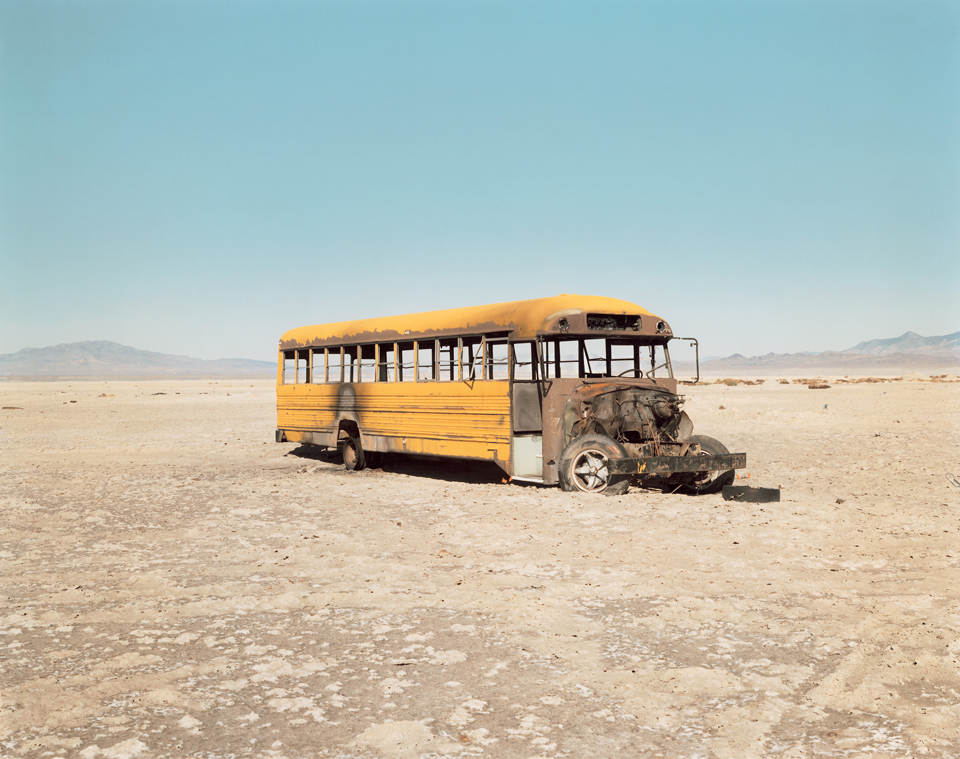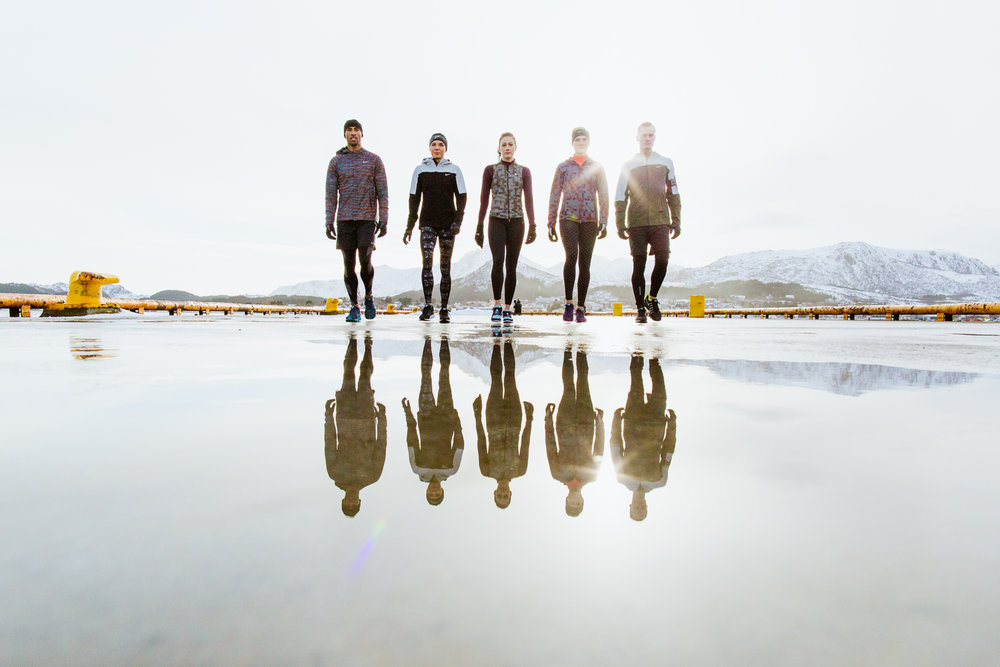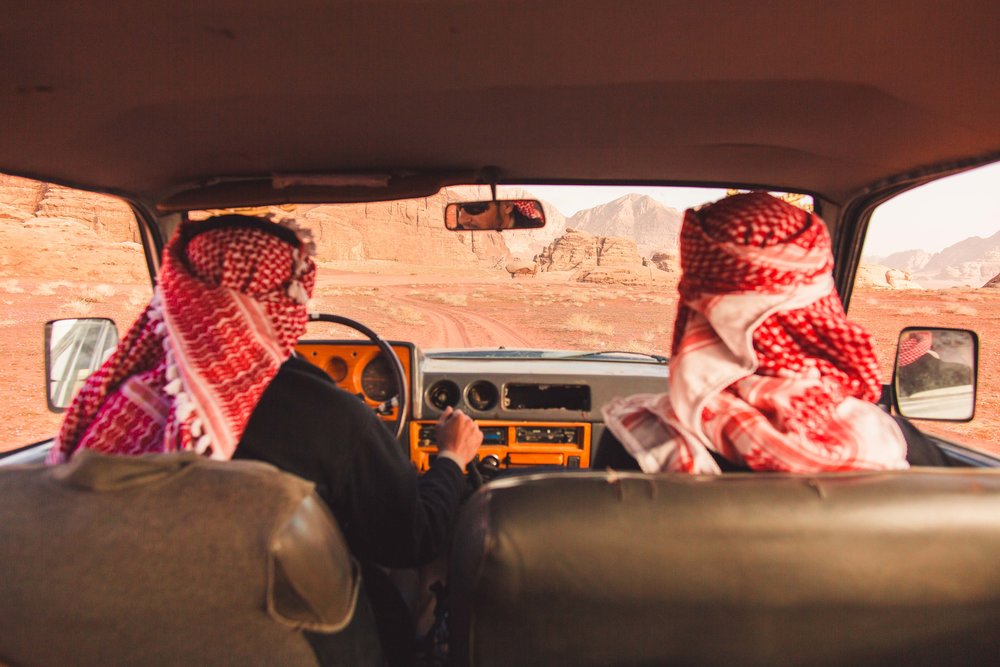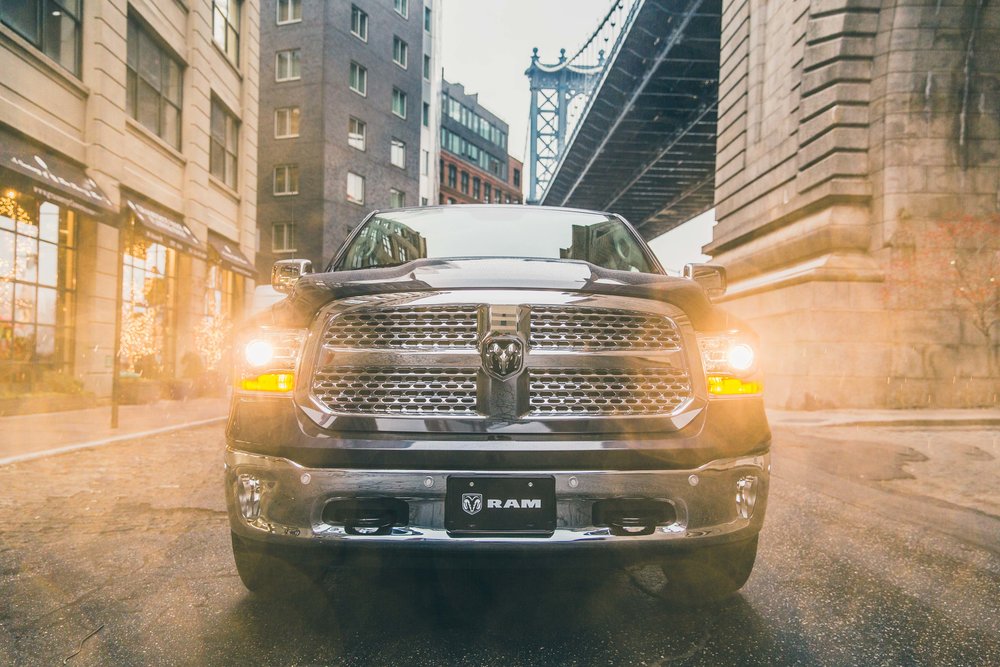The School of Photography winds down our FA17 semester at AAU with a shout to our students, past, present and future.
Understanding Artistic Involvement
by Dianne Morton
Saul Leiter, Snow, 1960
“Be concentrated on what exists and prevails…”
—Dorothea Lange
A photographer uses various levels of involvement while capturing an image. The elements of a photographer’s involvement may include: depictive involvement (concerned with basic, factual description above all else); constructed artistic involvement (the subject matter is created by the photographer or under the photographer’s direction); representational artistic involvement (no manipulation from the photographer); or directed reality involvement (the photographer works in tandem with what already occurs in the view). The amount of a photographer’s participation within a scene, from strictly representational to highly constructed, not only affects the category or genre of the work but also its classification as a depictive document or a photographic art piece. Depending upon the ratio of the photographer’s involvement to the reality of the scene, directed reality involvement can be less obvious and difficult to categorize than the other methods. Ultimately, since there is not a clear division between this category and constructed reality involvement, the differences between the two can be ambiguous.
My curiosity about influences concerning various generations of artists and photographers motivated me to delve deeper into this subject. I have chosen two photographic artists who exemplify directed reality involvement: Saul Leiter’s work from the mid-twentieth century and the work of the contemporary photographer Todd Hido.
Though Saul Leiter’s (American, 1923–2013) work was recognized by the photographer/curator Edward Steichen and exhibited at the Museum of Modern Art in 1953, he remained essentially anonymous for most of his career. Originally a painter, Leiter discovered photography as an additional artistic outlet for his creativity. During the 1940s, “straight” or street photography was becoming critically acclaimed, as the work of photographers such as Robert Frank and William Klein offered visceral views of urban life. As a painter, Leiter found inspiration with street photography; he used his camera as an extension of his mind, arm, and paintbrush.[1]
Leiter’s work embodied an alternative view of street photography: instead of black-and-white film, Leiter used bold chromogenic (three-colored) color film and, with his unique style of composition and framing, offered a creative twist within the reality of city streets. He used his camera as an unconventional way of seeing, framing, and communicating events on the streets of New York City by shooting through obscure angles, under canopies, or through rain-soaked store windows. The printed work offered a realistic view of the city with a slight bend of stillness, gentleness, and grace.[2] Leiter loved beauty, and this love resonates in the piece below. Leiter’s only directed involvement was to stand behind a rain-soaked window; in doing so, he created an image that offers a softer version of the cold reality outside on the busy New York street. The window acts as a filter to the harsh reality of the fast-paced city life outside. The lovely pop of yellow color is juxtaposed against a nearly monochromatic scene, softening the reality of the cold winter day. Upon further study, it appears Leiter’s directed reality involvement has a nearly 50–50 ratio: half-illusory, half-real.
Whether influenced by Saul Leiter or simply on a remarkably similar path, Todd Hido (American, b. 1968) offers a similar directed reality involvement in two of his series, entitled A Road Divided and Excerpts from Silver Meadows. Hido has never used filters on his Pentax 6x7 camera’s lens; instead, he often uses a rain-soaked car window as his filter between the lens and reality. Adding this element to his syntax enhances a supplementary, illusory layer to the narrative. After finding a location or scene to photograph, Hido’s approach often includes sitting in his car and photographing rain accumulating on the windshield. In addition to the scenery, the weather ultimately becomes a prominent subject throughout both series, often inferring an emotional weight. Hido’s directed reality involvement and inclusion of the windshield creates a murky effect, resulting in an antiquated veneer to the finished images.[3]
Hido’s images below are views of deserted scenes on dreary days. His use of directed reality involvement offers a unique and experimental way of observing an ordinary landscape. Through his own direction, Hido chooses at which point he will release his shutter, after deciding how much of the rain-soaked windshield he wants to include within the view. Therefore, he purposely interferes with the clarity and reality of the setting. This twist on reality offers a distinct and moody perspective; the “through-the-windshield” landscapes suggest the forlorn viewpoint of a perpetual outsider.
Todd Hido, Untitled #10473-B, 2011; Chromogenic Print
Todd Hido, Untitled #9238-e, 2011; Chromogenic Print
Though not strictly viewed as representational, directed reality involvement creatively engages the reality of the subject matter (in this case, the landscape), yet the photographer introduces a twist, which affects the reality of the view. In both Leiter’s and Hido’s works, directed reality involvement plays an instrumental role in furthering the moodiness of each narrative within the images.
Works Cited
Cole, Teju. “Postscript: Saul Leiter (1923–2013)”. The New Yorker. n.d. Web. 4 Nov. 2017.<http://www.newyorker.com/books/page-turner/postscript-saul-leiter-1923-2013>.
George, Michael. Workprints; Spoken Words: Todd Hido—A Road Divided; 2009; n.d., Web. 6 Nov. 2017. <http://www.michaelgeorgephoto.com/blog/?p=361>.
Szmulewicz, Roger. Fifty One; Saul Leiter; Fine Art Photography, 2014. n.d. Web. 5 Nov. 2017. <http://www.gallery51.com/index.php?navigatieid=9&fotograafid=15>.
[1] http://www.gallery51.com/index.php?navigatieid=9&fotograafid=15
[2] http://www.newyorker.com/books/page-turner/postscript-saul-leiter-1923-2013
[3] https://paddle8.com/work/todd-hido/30270-10845-7
The view from Oregon State University, in Corvallis, Oregon. Photo by Alyson Belcher.
AAU Represents at 2017 Regional SPE Events
This fall, Academy of Art University photographers assembled at the Northwest and West/Southwest Society for Photographic Education (SPE) Chapter conferences.
Northwest educators including Full-Time Faculty Marico Fayre (third from left) and Alyson Belcher (second from right).
SPE Northwest's Illuminate & Provoke took place on October 20-21 at Oregon State University in Corvallis. Keynote Speaker Richard Misrach presented his Border Cantos series, and Full-Time Faculty Alyson Belcher and Marico Fayre were in attendance.
Full-Time Faculty Kim Mowbray (left) and Katty Hoover (right) at Tahoe CoLab, the conference for West and Southwest Chapters.
MFA Alumnus J. Jason Lazarus serves as Vice Chair/Secretary for the chapter and helped organize the event. MFA Alumna Teresa Meier shared The Witness Within as part of the conference's Imagemaker Series.
SPE West and Southwest Chapters joined forces at Tahoe CoLab: Creativity, Community, and Collaboration, November 3 – 5 at Granlibakken, South Lake Tahoe. The conference featured Harrell Fletcher as Keynote Speaker, and Full-Time Faculty Kim Mowbray was present. Senior Faculty Katty Hoover presented Lake Como during the Imagemaker Series.
As Chair of the West Chapter, AAU alumna Amanda Dahlgren oversaw the weekend's activities.
We were happy to connect with colleagues, students, and alumni in the west, northwest and southwest regions!
What is a Landscape?
by Brian K. Edwards
Every few years I undertake an exercise to revise and revamp my web page. The process usually involves starting from scratch, rethinking the selection of images, the layout, the fonts, background colors, what contact information I should include, which profile picture I should choose…the list goes on. Image selection usually comes last even though it probably should come first. With image selection comes the issue or arrangement and the inevitable selection of categories for these images.
As long as I have done photography, landscapes have always found their way into my repertoire and these images were always grouped under a “Landscape” moniker. Image choice was usually simple - the shot below of Gesto Bay is one of the first I would consider for such this category. This was amongst the low hanging fruit on a tree containing many images that could easily be called landscapes. After all, they were taken outdoors, included lots of trees or other flora and in some cases fauna, and their taking encompassed the normal-to-wide angle perspective that made these landscape shots look like, well, landscapes. What could be easier?
Brian K. Edwards, Gesto Bay, Isle of Skye, Scotland, May 15, 2007
This time around, it wasn’t so easy, and it still isn’t. The current version of my website (www.briankedwards.com) has no Landscape category, gallery, or portfolio, even if there might be some images scattered in other categories, galleries or portfolios that could be so categorized. I do not know how to explain this. Possible explanations? For one, maybe there just aren’t enough landscape-type images that I want to show anyone. I doubt this, since there are at least five or six (enough to constitute a category, gallery, or portfolio) that I still like, and others I have liked, so I cannot say that not including these shots is the result of some change of heart. Second, have I crossed a precipice into a world where I care only about what the images are about and eschew such broad and perhaps anachronistic groupings including that of landscape? After all, we do live in modern times and I have read Susan Sontag (which has made me a better person, by the way). [1] This is not a bad option, but I don’t think it is the best option. My updated site includes a portrait category, so I have not moved beyond the use of more traditional (and possibly overly broad) groupings. Third, am I struggling with the notion of what a landscape is, what the notion means, and therefore what sorts of images might rightfully fall into such a category?
I think the answer lies behind door number three, but there might be a little bit of option two sprinkled in. For one, I am just not sure any more just what it means for an image to be considered a landscape, or whether images that I had previously thought of as being landscapes might better fit into some other category. This argument could easily apply to other genres like portraits (compare the work of Julia Margaret Cameron, August Sander, Diane Arbus, Cindy Sherman, and Loretta Lux, to illustrate) and even the line between color and black and white is no longer as thick and impervious as in days past even if attempts to add color to monochromatic images began soon after the invention of the daguerreotype.
Like many genres, the definition of landscape has expanded considerably since the early survey images of Timothy O’Sullivan and even since the modernist landscapes of Ansel Adams defined what a landscape image was and what a landscape was supposed to look like. The New Topographics movement certainly changed, at least for me, the meaning of landscape, as did the work of Timothy Misrach. Writings by the likes of John Beck (example, The Purloined Landscape: Photography and Power in the American West) have also influenced my thinking. [2]
Richard Misrach, Personnel Carrier Pained to Simulate School Bus, 1986 [2
Topographic photography introduced into the landscape many of the same issues that long influenced the social documentary photography of the likes of Lewis Hine and the countless shots or urban places dating back to the work of Charles Marville, who produced an extensive body of Parisian cityscapes during the mid- to late-nineteenth century. [3] John Thomson is another photographer of the same era who photographed Victorian London in a way similar to Marville. [4] What all of this work shared was an interest in how people interact with their environment and, for better or worse, how they affect that environment. Combining this with the vernacular landscape embedded in the work and writing of John Brinckeroff (J.B.) Jackson moves us quite a way from the romanticized view of landscapes embodied in centuries of landscape painting and the bulk of modernist landscape photography. [5]
Charles Marville, Rue de Constantine, ca. 1865 [4]
But along with all of these changes have been changes in my own point of view and preferences, and this alone might account for my newly minted agnosticism towards such a narrow definition of the genre. Perhaps all of this work can rightly be considered landscape, but the genre has become so broad and so encompassing that it can comprise images of great variety in both appearance and interpretation. If I were to return to the Isle of Skye (which I hope I do) would I even be interested in Gesto Bay as a subject? Perhaps my own attitudes towards what types of subjects I consider interesting, as well as the sorts of things I want to say about a particular place have changed. Under such a scenario, such a landscape-like interpretation of Gesto Bay might not even be possible since I would looking to say something else about that place or might perhaps pass it up as a subject to photograph altogether. Maybe I need to have a Landscape category, or gallery or portfolio, but maybe this time the kinds of images I would include now would be so different from what I included in the same category previously, reflecting nothing more than my own evolving sense of what this particular genre is really about.
Sources:
[1] Susan Sontag, On Photography, Farar, Straus and Giroux, 1978.
[2] John Beck, The Purloined Landscape: Photography and Power in the American West, Tate Papers, No. 21, Spring 2015, http://www.tate.org.uk/research/publications/tate-papers/21/the-purloined-landscape-photography-and-power-in-the-american-west
[3] Charles Marville, Rue de Constantine, ca. 1865, Metropolitan Museum of Art, https://www.metmuseum.org/exhibitions/view?exhibitionId=%7b21968755-5ddd-4fea-81c5-000d8aaaf6b3%7d&oid=264863&pkgids=236&pg=1&rpp=4&pos=3&ft=*
[4] Peta Pixel, 19th Century London Street Photography by John Thomson, August 14, 2013, https://petapixel.com/2013/08/14/19th-century-london-street-photography-by-john-thomson/
[5] John Brinckeroff Jackson, Discovering the Vernacular Landscape, Yale University Press, 1998.
Alumni Spotlight: Scott Borrero
An alumnus of AAU and the recent winner of Nigel Barker's Top Photographer show, Scott is a proven commercial photographer. While executing campaigns across the world, Scott has developed a well known digital personality and has amassed almost 400,000 followers on Instagram.
His photographic technique and surrealistic vision, creating wonder and purposeful distractions, make Scott's images so impactful.
Scott's passion is large scale commercial, environmental portraiture and branded content campaigns.
Scott has worked behind and in front of the camera with major brands, including Nike, AT&T, Jeep, Toyota, SLS Hotels, Finland/Jordan Tourism and more.
Modern Stereo Photography
by Shannon Polugar, MFA Student
A modern stereograph photo by Ignacio Torres, taken with a standard DSLR camera, is actually four photographs in one
Late last month I found myself upstairs in the back of a large antique store, where a dozen or so metal filing cabinets stood containing photographs of all but the earliest of photographic types, along with baskets of photos covering the tops of the cabinets. I, however, was drawn to one particular type of photograph: the stereographs.
For a lover of old photographs, it is easy to spend half a day in a room like this, at an antique mall in Monterey, California. The stereoscope or ‘viewer’ hangs from the ceiling above the filing cabinets
I have long been fascinated by this type of photography. In the closet of my grandfather’s office were stereograph slides that he had taken of their time in Ecuador in the 1960s, along with the Grand Canyon a handful of years later. I could spend hours putting the slides into the viewer, amazed at how surreal the three-dimensional photos appeared. Whether it was these or the over 100-year-old stereograph cards I was sliding into a wood and glass viewfinder in the antique store, they all felt like I was not just viewing a moment in time, but stepping into that moment.
One photographer though has found a way to create that same stereoscopic, three-dimensional view, with the modern digital camera, and without a stereo lens. Ignacio Torres, a photographer based out of New York City but who has done extensive work in Mexico as well, created his “Stellar” series with this view in mind.
The elements of space and time within the photographs are heightened in Torres’s photographs, making one feel ‘in’ the moment rather than just viewing it flatly.
Torres describes that his intention in this series was to heighten the element of space and time, which he does by taking four individual photographs in very quick succession, and then placing those photographs together in an animated GIF to create the three-dimensional effect.
The same is done with old stereograph photos online, though it is only two images in this case. Torres’s work, adding the two additional frames, creates a much smoother look. His series also plays up the whimsical, using Photoshop in post-production to highlight the stardust (confetti), to “serve as a visual metaphor to the spatial link we share with the stars.”
While older stereographs can be viewed digitally through a similar process, they don’t appear as smooth as Torres’s work
However, unlike the two frame stereographs that can be slid into a viewfinder, Torres’s work can only exist in the digital world. The images cannot be printed and still viewed as he intended. To be viewed on a gallery wall they would need to be in a digital frame. So while the visual effect is similar, there is a disconnect with Torres’s modern stereographs with the old ones.
And I did leave the antique store a bit poorer monetarily and a bit richer in history, a handful of stereographs from 1905-1915 neatly wrapped in a paper bag, but also having these modern stereographs portably within reach, only a URL away on my phone.
http://www.1883magazine.com/arts/arts/ignacio-torres
http://abcnews.go.com/Technology/page/stellar-project-images-photographer-ignacio-torres-14474643
DIY Tabletop Lightbox
Artist/designer with a starving-artist budget? Need to photograph your work for a final presentation or your portfolio, but can’t afford a “studio grade” light box? No worries—make this instead.









![Charles Marville, Rue de Constantine, ca. 1865 [4]](https://images.squarespace-cdn.com/content/v1/55ccfc39e4b0ff38cd532d8c/1510705826782-LOQLKG6KESENQY0P4T2A/CharlesMarvilleRueDeConstantine.jpeg)













